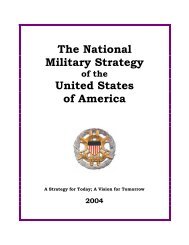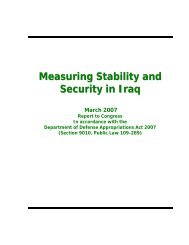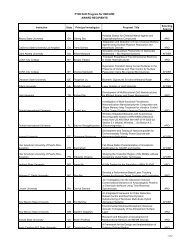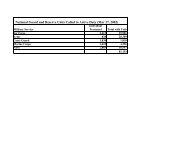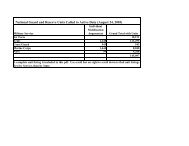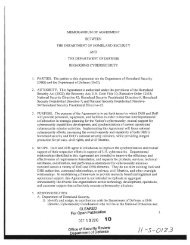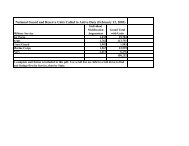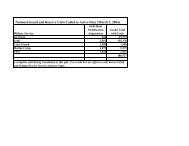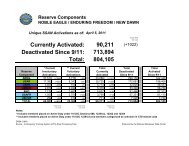Report - United States Department of Defense
Report - United States Department of Defense
Report - United States Department of Defense
Create successful ePaper yourself
Turn your PDF publications into a flip-book with our unique Google optimized e-Paper software.
UNCLASSIFIED<br />
The organization <strong>of</strong> transparent and peaceful elections leading to a legitimate government<br />
recognized by the Afghan people is the main objective for the 2014 elections and will be crucial<br />
to ensure the peaceful transfer <strong>of</strong> power.<br />
3.2: ASSESSMENT OF SUB-NATIONAL GOVERNANCE<br />
The Afghan government remains highly centralized, with budgeting and spending authority held<br />
primarily by the Ministry <strong>of</strong> Finance (MoF) and other central ministries in Kabul. Service<br />
delivery is implemented by line directorates in the provinces, sometimes with little input from<br />
provincial councils or governors. Other constraints include a continuing lack <strong>of</strong> human capacity<br />
to fill key government and leadership positions at sub-national level, limited engagement with<br />
civil society, and poor connectivity between national and sub-national levels <strong>of</strong> government.<br />
Sub-national administrations, however, continue to engage in limited coordination, planning, and<br />
service-monitoring roles, and there are multiple institutional and operational programs in place<br />
aimed at improving sub-national governance, including the Afghanistan Sub-National<br />
Governance Program (ASGP II), the Performance- Based Governor’s Fund (PBGF II) and<br />
support to provincial councils.<br />
Most <strong>of</strong> the budgetary decisions remain at the national level and the provinces play a marginal<br />
role in the decision-making process. Problems executing the Provincial Budgeting Pilot (PBP)<br />
program highlight this issue. In the current fiscal year (FY), the Provincial Budget Pilot (PBP)<br />
resulted in $5M for the Ministry <strong>of</strong> Education (MoE), while none <strong>of</strong> the other ministries under<br />
the pilot — the MRRD, Ministry <strong>of</strong> Agriculture, Irrigation, and Livestock (MAIL), and Ministry<br />
<strong>of</strong> Public Health (MoPH) — have received funding. It appears the PBP will continue its modest<br />
existence within the Afghan government’s highly-centralized budgeting process, since the draft<br />
budget for FY1392 has earmarked $17M for the MoE only. Major donors, including the U.S.<br />
Agency for International Development (USAID), World Bank, and <strong>United</strong> Nations Development<br />
Program (UNDP), are continuously working with the MoF to support the PBP toward building<br />
provincial budgeting capacities and establishing mechanisms by which the national government<br />
can transfer funding directly to sub-national entities, enabling the latter to deliver services<br />
directly to constituents effectively.<br />
Sub-national governance structures currently operate to varying degrees <strong>of</strong> effectiveness at<br />
provincial, district, and village levels, and are overseen by the Independent Directorate for Local<br />
Governance (IDLG), and the Ministry <strong>of</strong> Rural Rehabilitation and Development (MRRD).<br />
Although coordination and cooperation between these two organizations has historically been<br />
poor, recent improvements have been seen, including the release <strong>of</strong> a draft National Policy for<br />
Unified District and Village Governance and Development. This policy aims at establishing<br />
District Coordination Councils (DCCs) in every district <strong>of</strong> Afghanistan as an interim approach to<br />
district-level governance and development, and confirms the role <strong>of</strong> Community Development<br />
Councils (CDCs) as an interim approach to village-level governance and development, covering<br />
all villages in Afghanistan. If approved by the Council <strong>of</strong> Ministers, this policy would clarify<br />
how the national government is linked to the sub-national levels, and provide a means for<br />
conflict resolution by linking district-level concerns with the province’s developmental priorities.<br />
Elected Provincial Councils are present in all provinces, but engagement in planning, monitoring<br />
and budget formulation activity remains limited.<br />
128



